The Hobbit: An Unexpected Journey
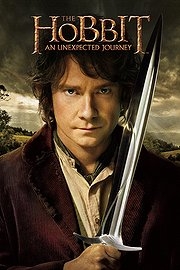
It has been almost a decade since the final film in The Lord Of The Rings trilogy came out, and in that time the Tolkien franchise has established a truly enormous fan base. As such, the expectation for The Hobbit to be just perfect must be undoubtedly daunting for any film-maker, whatever his reputation. Much like that “difficult 3rd album” syndrome, massively hyped sequels have to face almost insurmountable odds to be regarded as a decent film, disregarding any assured financial success (which The Hobbit definitely has). The Matrix sequels certainly had no chance, neither did the Star Wars prequels. Yet Peter Jackson has managed to create a prequel to one of the most successful and respected film projects in history that is as fun, thrilling and captivating as The Lord Of The Rings, whilst remaining a distinct entity.
Martin Freeman plays a younger Bilbo Baggins, who has never done much in the way of adventuring, preferring to stay at home, alone, smoking his pipe. When Gandalf (Ian McKellen) shows up one day volunteering his services to a band of uncouth dwarfs, it throws his comfortable life into turmoil. Seeking to reclaim their lost kingdom and their gold from Smaug the Dragon, Thorin Oakenshield (Richard Armitage) and his loyal followers embark on a quest. As evil begins to stir in Middle Earth, the band of dwarves must overcome foes from every side. Bilbo must leave everything he has ever known behind if he wishes to survive crazed goblins, vengeful orcs and hungry trolls.
Let’s get the technical stuff out of the way first. Most people will now be aware of the hubbub surrounding the 48 frames per second screenings of The Hobbit. Having seen both the higher frame rate and the usual 24fps versions of the film, most of the criticisms are in fact justifiable. On the positive, the 3D looks better and there’s none of that juddery blurryness when the camera pans, but it comes at the cost of everything looking too real. Although director Peter Jackson must be applauded for pushing the boundaries of cinematic experience, and although audiences will probably feel comfortable with hyper-clarity in time, The Hobbit has not been able to keep up with Peter Jackson’s graphical ambitions. Interior shots do, indeed, look like bare-bones test footage. It appears that a slower frame rate actually helps in the suspension of disbelief. However, all of this is a non-problem. Do not forget that you have a choice in this matter: simply attend a normal 24fps showing and you will avoid these singular issues.
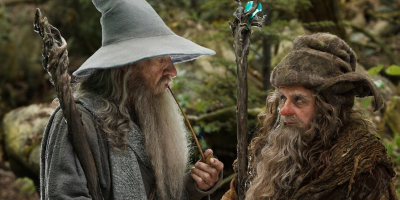
Because it is a prequel, The Hobbit has had the difficulty of how to portray the characters making a return from The Lord of The Rings. We have all seen what becomes of Bilbo, Gandalf and Gollum, so attempting to develop these characters’ personalities, whilst still keeping in mind the earlier time frame, is quite a hurdle. The Hobbit jumps that hurdle with aplomb. Martin Freeman performs marvelously as the younger Bilbo, and channels Ian Holm’s performance of the character whilst bringing something entirely new. His motivations are thoroughly explored, he is an unfortunate, likable hero, and he is a surprisingly dynamic character. Ian McKellen is, as usual, superb as Gandalf. His presence is as warm and reassuring as it was in The Lord Of The Rings, but we are given a new insight into his character in The Hobbit. He is less sure-footed, more fearful and is uncomfortable with authority. One scene in particular highlights his fragility, and we are shown, not an almighty wizard, but a man unsure if he is doing the right thing.
Alongside a nostalgic return to many old characters from The Lord Of The Rings, there is an abundance of novelty brought from the company of dwarves. Their steadfast loyalty, lively banter and brooding reminiscences of their lost home are enough to give them a great deal more depth than their clowning suggests. They appear flippant and over-confident at first, but when the band stand next to the elves, their diminutive size create make them seem quaint and almost vulnerable.

Although The Hobbit is definitely less ‘epic’ and more jovial than the previous visit to Middle Earth (it is a children’s book after all), the film remains surprisingly comfortable with the darker corners of Middle Earth. The primary antagonist, the Pale Orc, really is quite a malevolent presence. His hunting of the heroes throughout the film adds an underlying tension, which builds up through the film and pays off brilliantly in the climax. It’s nowhere near the baleful aura of Sauron and the ring, of course. Gollum’s return is as good as everyone had hoped – Andy Serkis continues to amaze. He manages to portray a younger Gollum, who is curiously more innocent than what we are used to, and more malevolent as a result. The game of riddles between Gollum and Bilbo is the highlight of the film.

We must be careful not to oversell The Hobbit, of course. Although the film is sold as the first of three, it is probably much more appropriate to consider this the fourth film: quite a lot of the film relies on a nostalgia of The Lord Of The Rings to be as effective. There is never a true sense of danger, although the film tries its darnedest, since we just know that everyone is going to make it out unscathed, and Gandalf is ready with a deus ex machina when needs be. Bilbo is almost a non-entity for a good 40 minutes or so in the middle act, which is a problem because our perspective really should remain with him as much as possible. It is through his little Hobbit eyes that we experience Middle Earth all over again, even a few more glances of Bilbo would have made him more of a presence in this time. The film is also unnecessarily long – many scenes just don’t need to be there, although none particularly drag like they did in The Lord of The Rings, but all of these criticisms feel like nitpicking. The film manages to capture you early, so that your emotional investment in Bilbo, Thorin and Gandalf keep you from questioning the finer details. For those nerds (such as we at BFF Towers) who will only watch the extended editions of The Lord Of The Rings, the length of The Hobbit isn’t a problem. Those unnecessary scenes are just par for the course, and for some the end will come too soon. Bring on The Hobbit: The Desolation of Smaug!
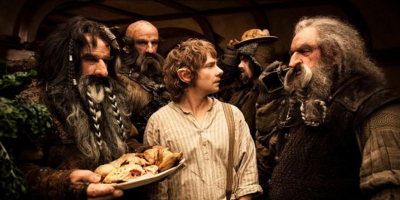
The Hobbit encapsulates everything that makes cinema so wonderful. Big action set-pieces are combined with fantastic dialogue and brilliant performances by everyone on set. Middle Earth feels wonderfully large again, New Zealand doing its part to feel majestic and impenetrable. For someone for whom The Hobbit has been hyped-up by the promotional material, for someone expecting a return to the epic quests of The Lord Of The Rings, it is understandable why you might be disappointed; The Hobbit is a different beast altogether from its forebears, but this is certainly not to its detriment. Peter Jackson has had an artistic vision for what he wanted to achieve in the first iteration in The Hobbit‘s trilogy, and he has stuck to it. The film looks gorgeous, the music is just sublime and you’ll even appreciate the bloody sound editing. The Hobbit: An Unexpected Journey is a solid foundation on which to build the subsequent two films, and memories of this cinematic experience will remain with you just as much as The Lord Of The Rings has. Just do yourself a favour and see the film in 24 frames per second, yes?

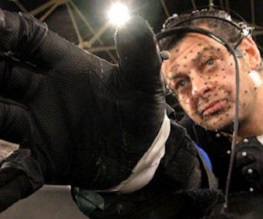

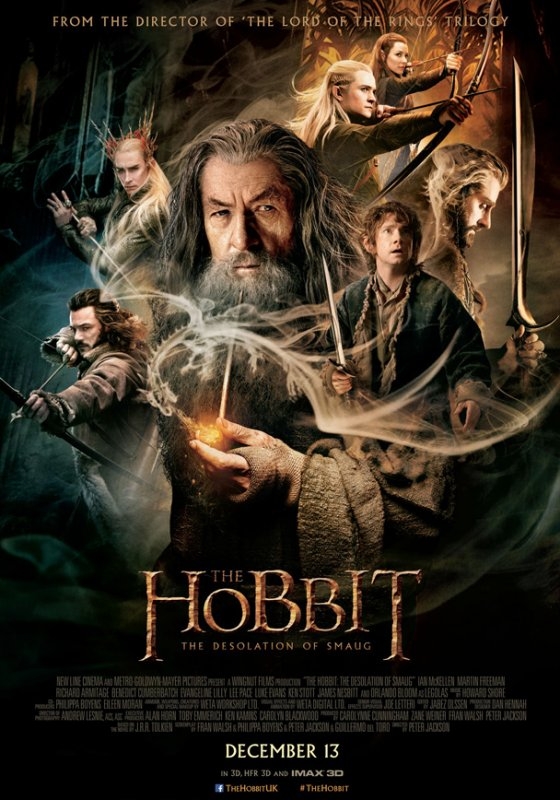

Recent Comments